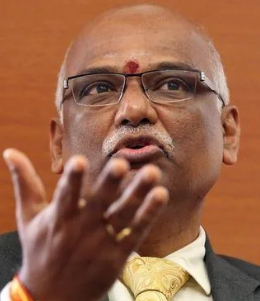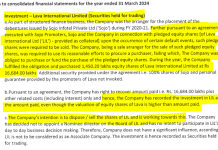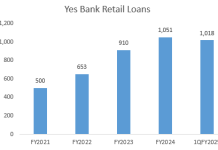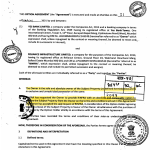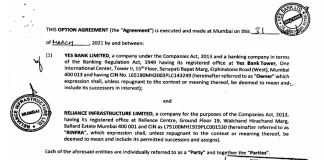Hemindra Hazari
In the ongoing demonetisation saga, the credibility of India’s central bank keeps plunging to new depths.
Repeated contradictory notifications, restrictions on cash withdrawal of deposits, inadequacy of new notes to replace the withdrawn high denomination notes, and a complete lack of transparency are just a handful of examples. What has gone unnoticed, though, is a statement made by R Gandhi, the most senior deputy-governor of the Reserve Bank of India (RBI), on December 7, on the supply of small denomination notes during a 26-day-period after demonetisation was announced.
At the monetary policy press conference, shown live on television, Gandhi, deputy-governor in-charge of currency management, read the following statement covering the period November 10 to December 5, 2016: “As regards lower denomination notes of ₹ 100, ₹ 50, ₹ 20 and ₹ 10, the Reserve Bank, over its counters and through bank branches all over the country, has supplied 19.1 billion pieces of denominations in this period. (₹ 100 – 8.5 billion, ₹ 50 – 1.8 billion, ₹ 20 – 3.1 billion and ₹ 10 – 5.7 billion). This is more than what the Reserve Bank had supplied to the public in the whole of last three years [italics ours].”
Nobody appears to have fact-checked RBI’s amazing claim that in a short span of 26 days, it supplied more small denomination notes than were supplied over the previous three years. In fact, in its own latest annual report, it turns out that over the last three years (2013-14, 2014-15, 2015-16) the RBI supplied a total of 50.2 billion small denomination notes.
Could Gandhi have been guilty merely of poor English, i.e., could he have meant that the 19.1 billion pieces supplied in this 26 day period were more than the supply of small denomination notes in any of the last three years?
Both the retracted and the edited versions of the transcript state, “in the whole of last three years”, and not “any” of the last three years. So it stands to reason that the RBI is explicitly stating that supply exceeded the aggregate supply of the last three years. This is confirmed by an even more emphatic statement by Gandhi in the same conference call:
“And that is why just now I mentioned, 19 billion notes which were equivalent to what we supply in three full years, that was in our custody and which we have given to the public.” [italics ours]
That the senior-most deputy governor, at such a crucial juncture can publicly make such a statement without any subsequent clarification or apology and still retain his post indicates the level of competence and integrity at the highest level of the RBI.
| Denomination | Notes Issued 10 Nov – 5 Dec 2016 | Notes Issued | ||||
| Notes Issued | Amount | FY2014 | FY2015 | FY2016 | Total | |
| Rs | Bn | Rs Bn | Bn | Bn | Bn | Bn |
| 100 | 8.5 | 850 | 5.131 | 5.464 | 4.910 | 15.505 |
| 50 | 1.8 | 90 | 1.174 | 1.615 | 1.908 | 4.697 |
| 20 | 3.1 | 62 | 0.935 | 1.086 | 3.252 | 5.273 |
| 10 | 5.7 | 57 | 9.467 | 9.417 | 5.867 | 24.751 |
| Total | 19.1 | 1,059 | 16.707 | 17.582 | 15.937 | 50.226 |
Interestingly, the RBI had originally published the whole of Gandhi’s statement in the conference call, but subsequently, the statement was removed from its website and an “edited” transcript was uploaded, wherein the details of the quantum of the specific small denomination notes was removed from the original statement.
It remains a mystery why the RBI decided to remove from its website the specific details of small denomination notes supplied in this period. Were the figures inaccurate, although the figure of a total of 19.1 billion pieces has been retained in the edited version? There is no clarity on this to date, as on most things to do with this whole question.
The last-quoted statement contains a curious phrase: It does not say that the RBI printed 19 billion notes in the 26-day period, which of course would have been physically impossible, given the existing capacity of its presses. It says rather that 19 billion notes were “in our custody… which we have given to the public.” It is surprising that, on November 8, the RBI had “in its custody” more small denomination notes than it would normally supply over a whole year. If the RBI’s claim is factual, it suggests that it was hoarding these notes, precisely what it keeps appealing to the public not to do.
A possible explanation of the large stock of small denomination notes in RBI’s “custody” is that instead of destroying soiled notes as it normally does, it hoarded them in anticipation of the shortage of notes following the sudden demonetisation. There were numerous reports after November 10, of customers and bankers complaining about the soiled notes they were receiving (literally “black” money). These were notes which banks had originally sent to the RBI for destruction. (Last year, the RBI had disposed of 12.9 billion pieces of small denomination notes over the course of the year.)
What was the relevance of showering the public with small denomination notes, perhaps mostly soiled, in the wake of demonetising high denomination notes and thus withdrawing 86% of the value of India’s currency? The total value of these small denomination notes was only 1.06 lakh crore, or about 7% of the value of the currency withdrawn. And within this, more than half the notes were of Rs 50 or less, accounting for a little over 1 per cent of the value of the currency withdrawn. The giant release of small change, then, can only be understood as one more attempt at spin.
None of this should have been necessary. No question of national security is involved. The RBI could have simply laid out all the facts about the receipt and release of notes every day on its website. Instead it shrouded the simplest questions in darkness, left it to the public to make calculations and guesses, and at times simply provided misinformation, as in the case of the deputy governor’s claims. The lack of transparency appears to have been a calculated strategy, to prevent any systematic questioning of a catastrophic decision. However, the lack of transparency has itself destroyed the RBI’s credibility.
Under governor Urjit Patel, the credibility and competence of the Reserve Bank of India has touched the nadir of its 82-year history. In a humiliating development, Parliament’s Public Accounts Committee (PAC), headed by a senior leader of the opposition’s Congress party, has demanded the appearance of the RBI governor on January 28, 2017, and has even asked the Governor why he should not be “prosecuted and removed from office”. The credibility of an institution is difficult to establish, but, as we have seen now, it can be destroyed in a month.

